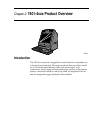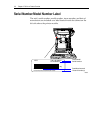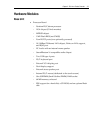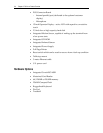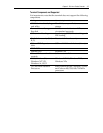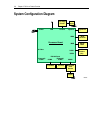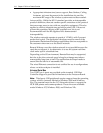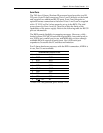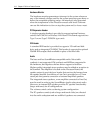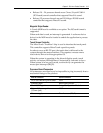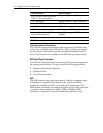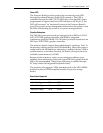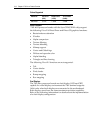
Chapter 2: 7401-4xxx Product Overview 2-9
100Base-T is wired identically to 10Base-T, except that the twisted pair
cable must be Category 5 and the hubs must permit 100 or 10/100
MB/s operation. Although 10Base-T will operate on Category 3 twisted
pair, or NCR "747" cable, an upgrade to Category 5 is required for
100Base-T.
A customer desiring to use the terminal in an existing 10Base-T
environment can do so and simply run at 10 MB. In order to upgrade to
100MB/s, Category 5 cable and 100 or 10/100 hubs must be installed.
NCR strongly recommends the use of Category 5 for all new cabling,
even if the customer initially intends to run only 10Base-T.
LED Indicators for Link Integrity (verifies cable and hub connection are
good) and LAN speed is provided on the Processor Board near the row
of connectors at the bottom of the e-box. The LED is ON (yellow) when
the speed is running at 100 MB/s.
Link Integrity is provided to the PC chipset to permit boot-up software
to verify the presence of the LAN connection. Software must allow 2
seconds after power-up in order for the Link Integrity signal to become
valid.
Wireless LAN Communications
When a wired Ethernet connection is not desired, a wireless LAN
adapter may be installed in the PCMCIA socket. This requires that the
PCMCIA daughter-card feature be installed. A wireless LAN used in
the terminal must meet the following requirements:
• Integrated antenna that meets the requirements of PCMCIA (PC
Card) Extended Type 2 card definition (a maximum of 5-cm
additional length).
• Power consumption within the capabilities of the PCMCIA
daughter-card.
• Signaling requirements within the capabilities of the terminal
PCMCIA interface. The main restriction is that DMA transactions
are not supported over the PCMCIA interface.
• Device drivers for the targeted operating system must exist.



